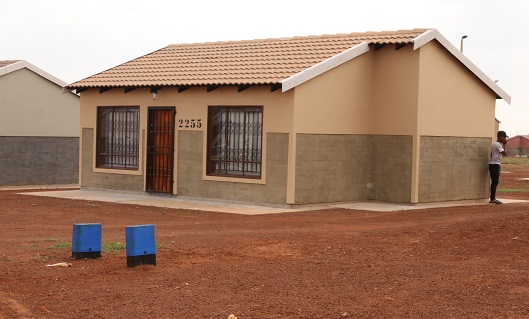In South Africa, the process of applying for RDP (Reconstruction and Development Programme) houses typically involves several steps. Here’s a general guide:
- Eligibility Criteria: Ensure you meet the eligibility criteria set by the government. These criteria often prioritize individuals or families who earn below a certain income threshold, are South African citizens, and don’t own any other property.
- Contact Local Government Offices: RDP housing applications are usually handled by local government offices or municipalities. Contact your local municipality or housing department to inquire about the application process. You can find their contact information on the municipality’s website or by visiting their offices in person.
- Application Forms: Obtain an RDP housing application form from the relevant government office. You may need to fill out personal details, provide documentation proving your eligibility, and specify your housing needs.
- Submit Application: Complete the application form accurately and submit it along with any required documents. These documents may include proof of income, proof of South African citizenship, identity documents (such as your ID or passport), and any other documents requested by the municipality.
- Waiting Period: After submitting your application, there is usually a waiting period while your application is processed. The waiting time can vary depending on factors such as the demand for housing in your area and the availability of RDP houses.
- Verification and Allocation: Once your application is processed, government officials may conduct verification checks to confirm your eligibility. If your application is approved, you will be allocated an RDP house based on availability and your specific housing needs.
- Notification: You will be notified once your application is successful. This notification will include details about the allocated RDP house, such as its location and the next steps you need to take.
- Signing Documents: You may need to sign legal documents related to the allocation of the RDP house. Make sure to read and understand these documents before signing them.
- Occupation: Once all formalities are completed, you can move into your allocated RDP house.
It’s essential to stay informed about the application process and follow up with the relevant authorities if you have any questions or concerns. Additionally, be wary of any individuals or organizations claiming to expedite the process for a fee, as this may be a scam.
As of my last update in January 2022, the process for applying for RDP (Reconstruction and Development Programme) houses in South Africa typically involves contacting your local municipality or government housing department. Here’s a step-by-step guide:
- Check Eligibility: Make sure you meet the eligibility criteria set by the government. This often includes factors such as being a South African citizen, earning below a certain income threshold, and not owning any other property.
- Contact Local Municipality: Reach out to your local municipality or government housing department to inquire about the RDP housing application process. You can find their contact information on the municipality’s website or by visiting their offices in person.
- Obtain Application Form: Obtain an RDP housing application form from the relevant government office. This form will require you to provide personal details, proof of income, proof of South African citizenship, and other supporting documents.
- Complete Application Form: Fill out the application form accurately and completely. Ensure that you provide all required information and attach any necessary documents as specified in the application guidelines.
- Submit Application: Submit the completed application form along with the required documents to the designated government office. Make sure to keep a copy of your application for your records.
- Waiting Period: After submitting your application, there will typically be a waiting period while your application is processed. The length of this waiting period can vary depending on factors such as the demand for housing in your area and the availability of RDP houses.
- Verification and Allocation: Government officials may conduct verification checks to confirm your eligibility for an RDP house. If your application is successful, you will be allocated an RDP house based on availability and your specific housing needs.
- Notification: Once your application is approved, you will be notified of the outcome. This notification will include details about the allocated RDP house, such as its location and any further steps you need to take.
- Signing Documents: You may need to sign legal documents related to the allocation of the RDP house. Be sure to read and understand these documents before signing them.
- Occupation: After completing all necessary formalities, you can move into your allocated RDP house.
It’s important to stay informed about the application process and to follow up with the relevant authorities if you have any questions or concerns. Additionally, be cautious of any individuals or organizations that claim to expedite the process for a fee, as this may be a scam.

